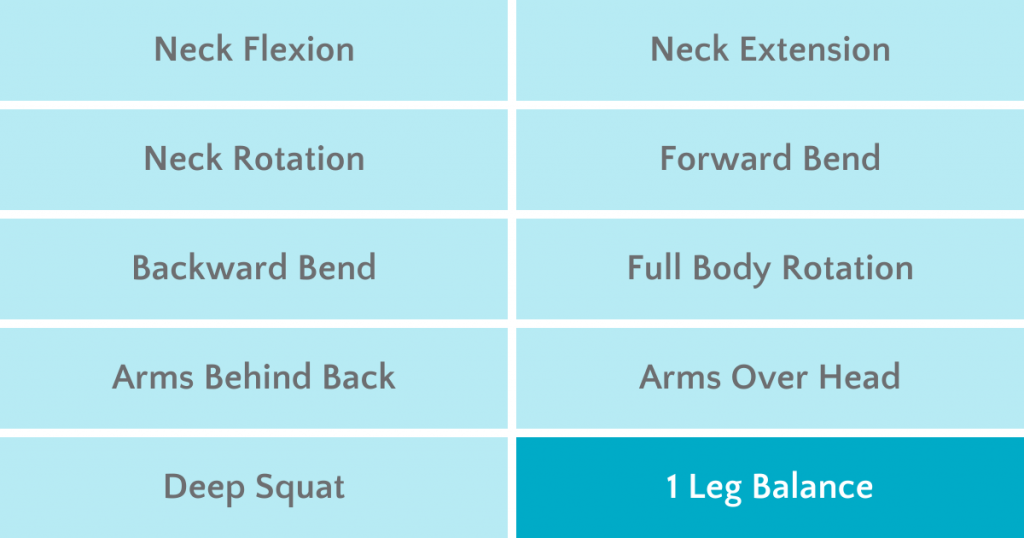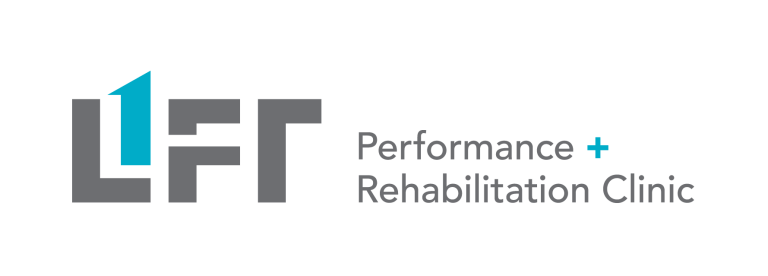Improve your balance with Lift Clinic’s team of physio, chiro, RMT and strength coaches!
This post will focus on the assessment techniques used to find the root causes of balance limitations.
A client’s ability to balance is important to have in everyday tasks as it can be a good predictor of falls risk and overall function. Balance is also very important almost all sports but especially in sports such as gymnastics, dance, or surfing. In a clinical setting, we assess balance using the single leg balance test. Assessing balance can give us insight in stability at the ankle as well as the function of the vestibular system in the brain. Read on to learn about the single leg balance test and the many other techniques used by our clinicians to assess balance.
This post is a continuation of our blog series on our full body assessment. If you haven’t already, visit our blog page to learn more about how we assess and treat other movements in the body.

For any given movement pattern, our treatment approach follows 4 primary steps:
- Assessment
Techniques used to test ranges of motion and find the root causes of limitations
- Reset
Hands on treatment techniques used to improve & restore limited range of motion
- Reinforce
Exercises or self treatments that help maintain the gains made from the reset techniques.
- Reload
Exercises that develop strength, resilience, and coordination for the desired movement pattern.
Visit our IG post to see assessment techniques in action
7 assessment techniques to find limitations in neck extension:

1) Top tier single leg balance

2) Half kneeling balance
This test is used to assess core stability. The client is placed in a half kneeling stance with the front foot directly in front of the back knee. If there is a lack of core stability, we may see the client fall to their left or right.

3) Vestibular breakouts
The vestibular system is a group of structures in the brain that are responsible for balance and senses of body position. To test the function of the vestibular system, we have clients stand on soft Airex pads. Next, the client will move there head back and forth in various planes. If the client has trouble balancing in this test, it may be indicative of limitations in the vestibular system.

4) Bird dog test
The bird dog test is used to assess core stability. If the client is unable to stay in a position with the opposite arm and leg raised as shown in the photo, there is likely a deficit in core stability. Other compensations that can indicate poor stability are excessive shifting to one side or arching of the lower back.

5) Ankle plantar flexion
Plantarflexion is the movement of pointing the toes downward. Ankle mobility is an important consideration for balance.

6) Ankle dorsiflexion
Dorsiflexion is the movement of the bringing the top of the foot closer to the shin. This assessment tests dorsiflexion of the back foot with the knee in an extended position.

7) Inversion and eversion
Inversion in the movement of rolling the foot inwards while eversion is the movement of rolling the foot outwards. Adequate mobility in both these movements in important for side to side balance.
What's next?
After a thorough assessment of your single leg balance, the next step is to treat the root cause of your limitations so you can get back to 100%. This will consist of a combination of hands-on treatment techniques as well as specific exercises.
Stay tuned for the next post in the series: Single Leg Balance Resets
